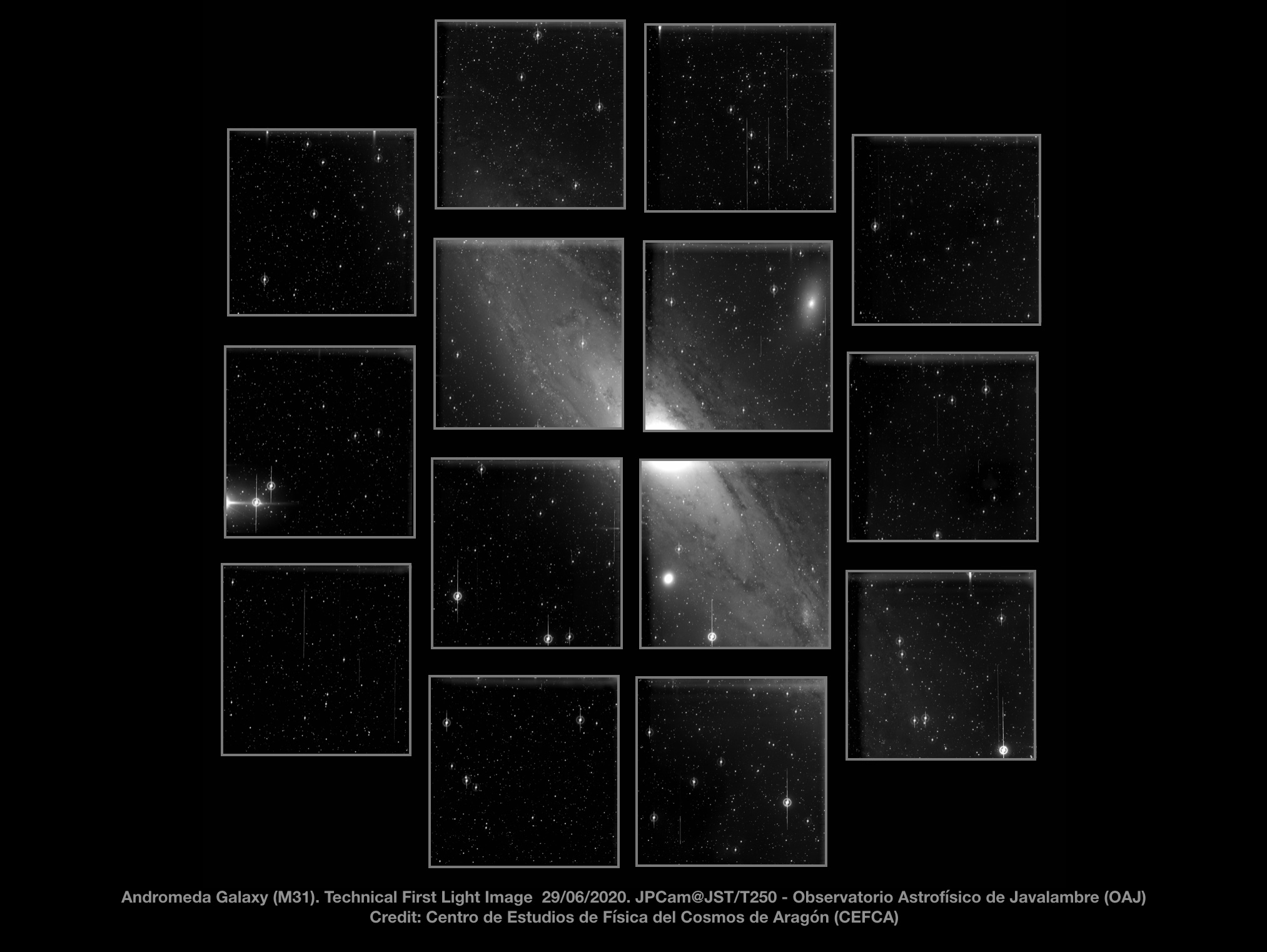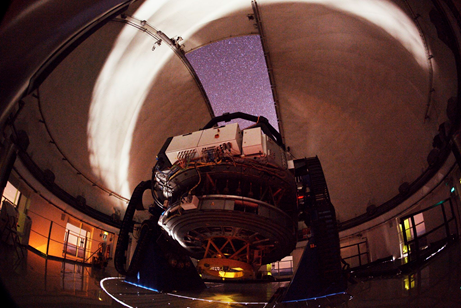Levantamento Astronômico J-PAS
Vista noturna do Observatório Astrofísico de Javalambre (OAJ).
Créditos: Centro de Estudios de Física del Cosmos de Aragón (CEFCA)/Óscar Blanco Varela
Com um design inovador do ponto de vista tecnológico, o Javalambre-Physics of the Accelerated Universe Astrophysical Survey (J-PAS) é um dos maiores projetos atuais de observação do céu. O levantamento é fruto da parceria científica e tecnológica Brasil-Espanha envolvendo o Observatório Nacional, o Instituto de Astronomia, Geofísica e Ciências Atmosféricas, no Brasil, o Centro de Estudios de Física del Cosmos de Aragón e o Instituto de Astrofísica de Andalucía, na Espanha.
Coliderado pelo Observatório Nacional, o J-PAS é um projeto único na astronomia mundial que irá, em breve, iniciar a cobertura inédita de mais de 8 mil graus quadrados do céu do hemisfério Norte, observando mais de 400 milhões de galáxias e 500 mil aglomerados e grupos de galáxias.
Esse mega-levantamento celeste auxiliará no desenvolvimento de pesquisas de caracterização da chamada Energia Escura — o mecanismo físico por trás da aceleração cósmica — e deixará um imenso legado para a astrofísica em geral. A câmera principal do J-PAS, a JPCam, uma das maiores câmeras de tipo mosaico do mundo e de responsabilidade brasileira, está em fase de comissionamento.
Depois disso, JPCam começará a obter dados produzindo os melhores redshift fotométricos do mundo, permitindo a construção de um mapa tridimensional de alta precisão do Universo indo a distâncias maiores que 9 bilhões de anos-luz. Isso permitirá não só obter informações importantes sobre a natureza da misteriosa Energia Escura, mas também sobre inúmeras áreas da astronomia, incluindo a evolução de galáxias, aglomerados e grupos de galáxias e estudo de diferentes populações estelares, supernovas e objetos do sistema solar.
***
With a technologically innovative design, the Javalambre-Physics of the Accelerated Universe Astrophysical Survey (J-PAS) is one of the largest current sky surveys. The project is the result of a Brazil-Spain scientific and technological partnership involving the National Observatory of Brazil, the Institute of Astronomy, Geophysics and Atmospheric Sciences, the Centro de Estudios de Física del Cosmos de Aragón and the Instituto de Astrofísica de Andalucía, in Spain.
Coordinated by the National Observatory, J-PAS is a unique project in world astronomy that will soon begin the unprecedented coverage of more than 8,000 square degrees of the Northern sky, observing more than 400 million galaxies and 500,000 clusters and groups of galaxies. This mega-celestial survey will help to characterize the so-called Dark Energy — the physical mechanism behind cosmic acceleration of the Universe — and will leave an immense legacy for astrophysics in general. J-PAS main camera, JPCam, one of the largest mosaic-type cameras in the world and under Brazilian responsibility, is in the commissioning phase.
After that, JPCam will begin to obtain data producing the best photometric redshifts in the world, allowing the construction of a high-precision three-dimensional map of the Universe going to distances greater than 9 billion light years. This will allow not only to obtain important information about the nature of the mysterious Dark Energy, but also about numerous areas of astronomy, including the evolution of galaxies, clusters and groups of galaxies and the study of different stellar populations, supernovae and objects in the solar system.

Primeira luz obtida pela JPCam da Galáxia de Andrômeda

Javalambre Survey Telescope. Créditos: Centro de Estudios de Física del Cosmos de Aragón (CEFCA)
Responsável pelo estudo:
Renato de Alencar Dupke (lattes)
Pesquisador da Coordenação de Astronomia e Astrofísica do Observatório Nacional.
Contato: rdupke@gmail.com